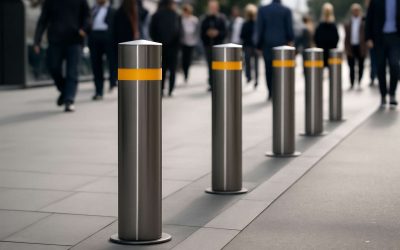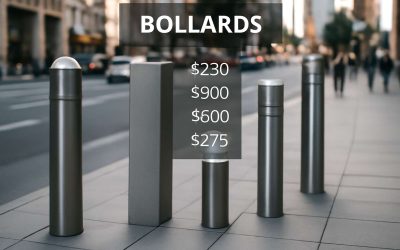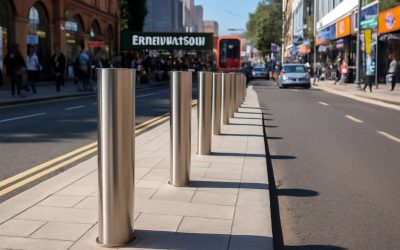
Steel bollards are safety features used in a number of situations. They mark car-free areas, deter vehicular crime like smash-and-grab burglaries, and protect pedestrian zones from vehicle collisions. These barriers also help direct traffic and can even be decorative. Many are designed to look like historic or ornamental iron, and they are often painted in bright colors to match or stand out from their intended surroundings. Decorative steel bollards are especially popular in urban regions, where they can add a touch of charm to city streets and sidewalks.
While all bollards are made to withstand impacts, the forces they can withstand depend on the type of impact and location. Some are flexible enough to allow a minor collision, but others are designed to stop cars, trucks, and other vehicles. They can be built to create a barrier around parking lots, in asphalt roadways, or alongside sidewalks and other pedestrian-friendly areas. They are also used in loading docks and garages, as well as to protect parks, stadiums, cemeteries, government buildings, or other large facilities.
Whether they are built to be fixed or removable, most steel bollards have either a concrete base or are bolted into the ground. Some are telescopic, allowing them to be raised or lowered when not needed (as in the case of a temporary steel bollard installed for construction work). They can also be anchored into the ground, and they may or may not be covered with a padlock-style lock. Some are coated with a reflective coating to be more visible at night or in poor weather conditions.
The type of steel and finish used to make a bollard can have a big impact on its upfront cost, but it’s also important to consider the ongoing maintenance costs. While some steel safety systems can last a long time, they do require regular upkeep to keep them in good condition. They need to be cleaned regularly to remove any dirt and debris that can cause corrosion, and they should be repainted when their original paint starts to fade or show signs of wear. In addition, any dents or scratches in the metal must be repaired immediately.
Steel is usually the material of choice for modern, decorative, and security bollards, and it is also available in a wide range of sizes to suit different locations. It’s also possible to purchase bollards made from other materials, including aluminum and concrete. In general, however, these are less expensive than steel because they aren’t as strong and are more likely to dent or bend when hit by a vehicle. The durability of the metal and how easily it bends depends on how it’s heat treated and the alloy used to produce it.



0 Comments